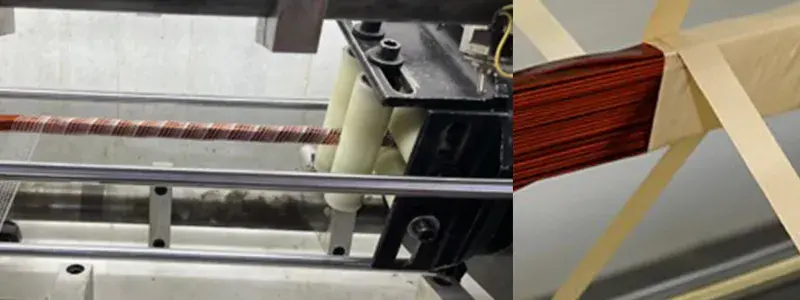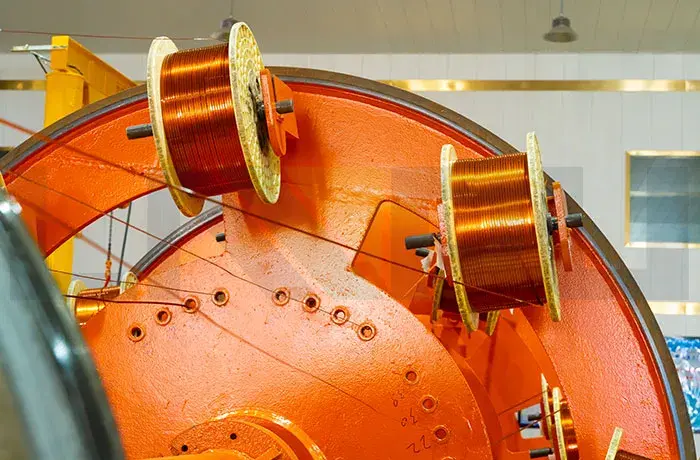Introduction of Continuously Transposed Cable:
A Continuously Transposed Cable (CTC) consists of a number of rectangular, film insulated conductors made into an assembly and usually over-wrapped with layers of insulating material. The number of conductors is usually an odd number (from 5 to 49), arranged side by side in two stacks. A special tool alternately pushes the upper left and lower right wires onto the respective neighboring stack so that each wire takes on every possible position within one cycle in the continuously transposed cable. The length of the continuously transposed cable for one complete cycle depends on the smallest diameter of the transformer winding, the number and size of the single strip.

Transposed cable or Continuously Transposed Conductor (CTC) is the most used for windings on power transformers.
It consists of a group of enameled rectangular wires, usually with PVF (polyvinylformal) enamel, which are transposed to create a kind of rectangular strand.
In the CTC, each elementary conductor consecutively and repeatedly assumes every possible position inside the cable.
The bundle of strips can be wrapped and insulated with tapes, generally in pure cellulose paper.
Continuously Transposed Conductors (CTC) consist of a number of enameled rectangular wires (4~79 strands) made into an assembly.
Each strand is transposed in turn to each position in the cable and is then covered with layers of insulation paper or film. Continuously Transposed Conductors are used in winding wires for medium and ultra high power transformers.
Advantages
• Shortened winding time for transformer
• Decreased size and cost of transformer
• Reduced electrical losses
• Excellent winding ability and simple handling
• Improved mechanical strength of winding (Self- Bonding CTC)
| Elementary conductors | Cu | Al |
| Strip width [mm] | 2.5 ÷ 12.5 | 5.0 ÷ 12.5 |
| Strip thickness [mm] | 0.8 ÷ 3.25 | 1.5 ÷ 3.25 |
| W/T ratio | ≥ 2.5:1 ÷ ≤ 7.5:1 | ≥ 2.5:1 ÷ ≤ 7.0:1 |
| Section of elem. conductor [mm²] | 4.35 ÷ 35 | 8.0 ÷ 35 |
The elementary conductors are insulated with enamels in thermal class from 120 to 200 ° C and, on request, self-adhesive epoxy resin is available, even one-sided (radial).
| CTC | Cu | Al |
| No. of strips | 5 ÷ 85 | 5 ÷ 85 |
| Axial max [mm] | 6 ÷ 27 | 8 ÷ 27 |
| Radial max [mm] | 5 ÷ 80 | 5 ÷ 80 |
CTCs can be subsequently insulated with a variety of tapes – from pure cellulose kraft paper, to thermo-stabilized paper or micro-crepe – or with better performing insulators such as polyesters and aramids for higher thermal classes.
LP Industry produces a wide range of CTCs both in copper and aluminum, in all possible configurations.

